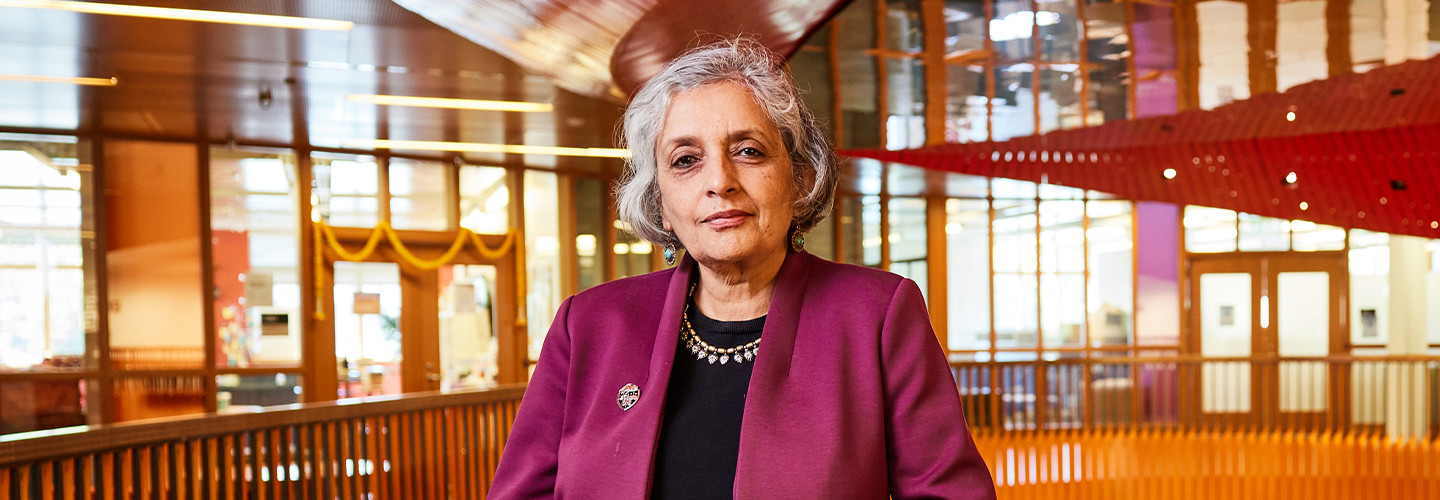EDTECH: How do you ensure that Ecampus is both welcoming and rigorous?
MURTHY: There is always the concern with online programs that students are disconnected from the campus. It’s harder to support them unless you do it deliberately. We have a centralized online learning division, and we’ve had it for a long time, since 2002.
Ecampus is the same level of rigor as all of our 100 undergraduate and graduate programs that we offer online. They have the same learning outcomes. Faculty who teach on campus are the same faculty who develop online courses. It’s not an accident that we’re ranked in the top 10 nationally by U.S. News and World Report for online bachelor’s programs. We’ve been ranked highly for nine years now.
EDTECH: How do you approach your relationship with the IT department?
MURTHY: IT used to be something you did on the side, but it’s increasingly clear that IT is the backbone, the great connector. It’s a huge priority in our OSU strategic plan and a big part of our success, not only on the Ecampus front but also with research delivery, research computing, relationship management and client management.
There are very particular investments that we are making. We are rolling out a new student customer relationship management system called Beaver Hub. There’s a new program that we’ve kicked off called the Administrative Modernization Program, looking at how to modernize our processes, business processes and academic processes. Then, of course, there’s our investment in online teaching. There’s a new flagship facility coming up: the Jen-Hsun and Lori Huang Collaborative Innovation Complex. It’s a $200 million building. The Huangs generously gave us a $50 million gift. Part of that gift is an NVIDIA supercomputer.
We were really lucky to hire an amazing CIO, Andrea Ballinger. She’s a terrifically collaborative and energetic person. She is working with our leadership, with our provost and with our central University Information and Technology unit to modernize our IT infrastructure.
EDTECH: As you approach your second academic year as university president, what are your goals? What role does technology play in achieving them?
MURTHY: For me, the driving principle is always mission. Technology is a very important adjunct to getting things done, but the focus is always on what the university is all about.
I started this whole thing with a few high-level goals. The highest of these is student success. We are focused on improving graduation rates for students. Our six-year rate is currently something like 71 percent, and we’re pushing to get past the 80 percent mark. Technology is certainly an important part of that: how we deliver teaching, how we support our students, how we keep track of student success, how we enable students to succeed.
The second big priority for me is research and amplifying our Research 1 mission. Oregon State University is one of two R1 universities in Oregon, and we are the STEM-centric university, so we have a particularly important role in Oregon. IT and technology are a big part of that.
The third part of my vision is delivering fully on our land-grant mission. What does it mean to be a modern land-grant university? There, too, we have experiment stations all across the state, research being done all across the state with connections to our communities. Technology and IT will consistently play a big role in that. And we must do all of this inclusively to ensure that all Oregonians feel welcome at OSU and are successful here.
EXPLORE: Oregon State University athletics soars thanks to an innovative IT team.
EDTECH: What do you see as your greatest challenge?
MURTHY: State universities have all seen a decline in per capita funding over decades now. Part of that is because people doubt the value of a college degree. I have to focus on communicating the extraordinary value of an OSU degree, and of public higher ed more generally, to our population, to our legislators and to the nation more broadly. It’s on us to show that a college degree will deliver all the benefits that we say it will.
I believe that public higher ed is a sacred mission. It’s at the heart of the American Dream. If you are able to offer a terrific education at modest cost and propel students to success, that’s a huge deal, because they take with them not only themselves and their families but their future families. I’m so excited to be a part of that mission.










